11345 A FASCINATING SET OF TWELVE WATERCOLOR STUDIES OF EIGHTEENTH CENTURY CERAMIC PLATES OF VARIOUS ORIGIN French.Second Half Of The Nineteenth Century. Measurements: Height: 20 “(50.8 cm); Width: 16 1/8” (41 cm). Sight Size: Height: 14 3/4″ (37.5 cm); Width: 11″ (28 cm).

Research
Of watercolor and ink on paper. Each with the following captions:
Céramique Française / Nièvre / Assiette / Faïce Nevers Camaïeu
Céramique Française / Nord / Assiette / FaïenceDe St. Amand
Céramique Française / Seine / Assiette / Faïence De Sceaux
Céramique Française / Nièvre / Assiette / Nevers
Céramique Française / Bas-Rhin / Assiette / Faïence De Strasbourg
Céramique Française / Seine-Inférieure / Assiette / Faïence De Rouen
Céramique Française / Seine-Inférieure / Jatte / Faïence De Rouen
Céramique Hollandaise / Décor Polychrome / Assiette / Faïence de Delft
Céramique Hollandaise / Décor Bleu / Assiette / Faïence de Delft
Céramique Japonaise / Décor Polychrome / Assiette / Porcelne De Yeddo
Céramique Japonaise / Décor Bleu / Assiette / Porcelne De Yeddo
Céramique Chinoise / Famille Rose / Jatte / Porcelne de Canton
Provenance:
A Massachusetts Estate
This remarkable group of twelve watercolors constitutes an unusual, highly realistic and accurate study of ceramic dishes, depicting 18th century examples from France, Holland, Japan and China. Interestingly, rather than being directly painted, the plates are rendered on a separate sheet of paper in the shape of each dish and then applied to the background paper, giving an additional subtle layer of dimensionality. This effect is amplified by the clever use of light and shade both on the dishes and shadows they appear to cast.
The heading and captions of each watercolor details the plate’s country of origin, place of manufacture, and type of decoration. The French ceramics include plates from Nevers, St. Amand, Rouen, Strasboug and Sceaux. One of the dishes made at Nevers is an example of Faïences Patriotiques, revolutionary wares painted with patriotic emblems and mottos. The Phrygian cap, for example, adopted as a symbol of the Republic, appears on the one of the present plates above the word “Constitution.” Normally colored red, that pigment was destroyed at such high firing temperatures, and therefore the cap was rendered in blue or yellow. An example of this plate dated to 1791 is in the Musée Carnavalet (figure 1).
The Netherlandish plates are Delft and are painted in the style of Asian porcelain. One is executed in the Imari style and one in blue and white, and example of which can be found in the Rijksmuseum (figure 2).
The Japanese plates represent blue and white and Imari examples from in Edo (spelled here as Yeddo), and the Chinese plate is a famille rose sample from Canton.
Also noteworthy is the distinctive lettering on each picture. The present font falls in to the category of slab-serifs (categorized by blunt ‘tails’ of approximate thickness to the rest of the letter) also known as “Egyptians” because they were developed at the same time as the public’s fascination with contemporary archaeological discoveries. “French [type] founders developed important transitional and modern faces [and] small commercial printers and sign painters used exaggerated variations of these faces as well as other decorative motifs.”1
It is interesting to speculate as to the original purpose of this highly unusual set. Given the very accurate rendering of the diverse ceramic plates they depict, it is possible they were commissioned as a survey of an actual porcelain and faïence collection, a possibility further enhanced by the precise descriptions and fine calligraphy found on each.
It was sometimes the case that wealthy collectors had an artist paint watercolors of their collection to be used in a private book with a small print run made for themselves and friends. In figure 3, images of an early 20th century book of this type show how one collector, James Ward Usher, did just that; in that instance he even painted the water colors himself.
However, there appears to be no other collection of the original art work for such a book in existence, making the present set of watercolors exceptionally rare.
Footnotes:
- Heller, Steven, and Louise Fili. Typology. San Francisco, Calif: Chronicle, 1999. 26.


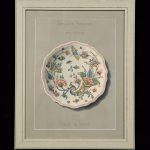
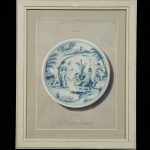


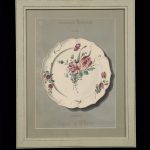

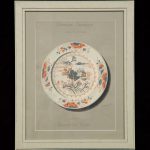

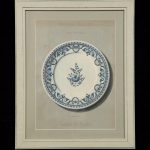
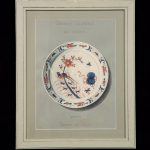
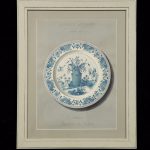
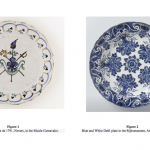
Comments are closed.